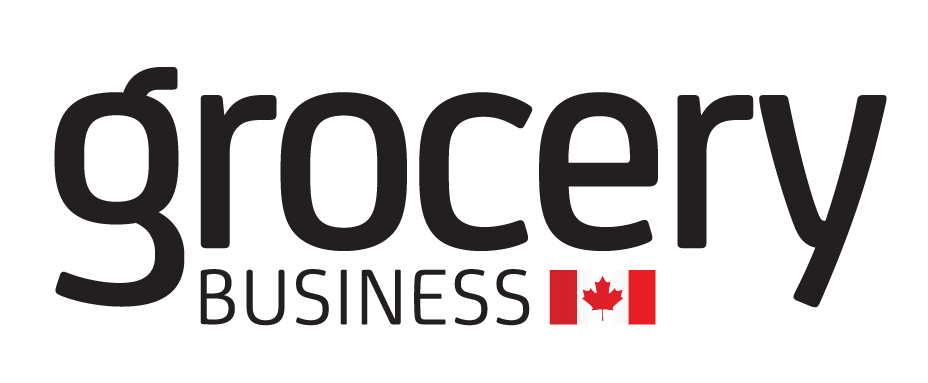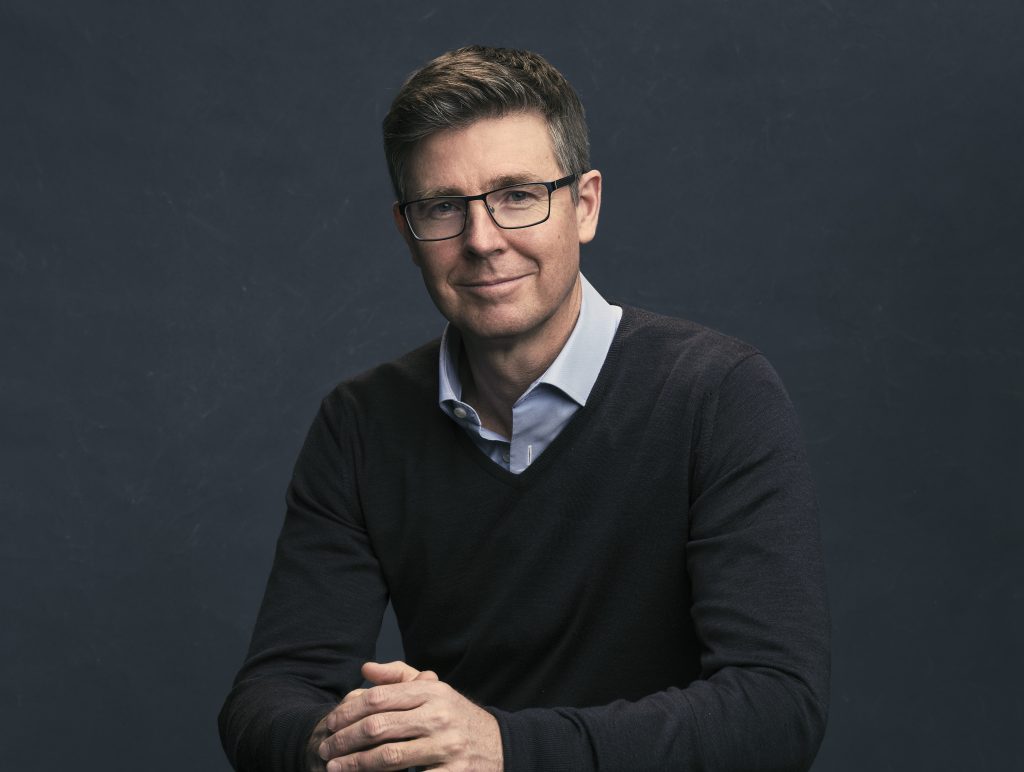
By Marjo Johne
About two years ago the business leaders at Loblaw Companies Limited sat in a boardroom to chart a path forward for the organization’s environmental, social and governance strategy. They returned each week for many weeks.
Loblaw was looking to deepen its ESG commitments in areas where it could make the greatest impact, recalls Kevin Groh, senior vice president, corporate affairs and head of ESG at Loblaw. The challenge was deciding what to focus on when there were so many issues demanding urgent attention.
“We’re a massive, complex enterprise with a very diverse portfolio of businesses,” says Groh. “So, we said, ‘let’s use our purpose – helping Canadians live life well – as a lens through which we assess the enormous number of things we could commit to.”
“We wanted focus on issues that mattered to Canadians, embodied our purpose, and where we could have the greatest impact,” adds Galen Weston, president and chairman of Loblaw. “We landed on two distinct areas: fighting climate change and advancing social equity. By focusing our attention and resources on those areas, we can meaningfully help Canadians live their lives well.”
The math suggests Loblaw is positioned to succeed in its ESG goals. With 90 per cent of the population living within 10 kilometres of one of its stores, and a supply chain that incorporates thousands of companies across Canada and around the world, Loblaw has powerful reach and clout.
It’s not been shy to use that to push for positive change. Last year, for example, Weston sent a letter asking the company’s control brand vendors to adopt the “golden design rules” for plastic packaging.
Developed by the Consumer Goods Forum Plastic Waste Coalition of Action, a global alliance – co-sponsored by Weston and Alan Jope, CEO of London-based Unilever PLC – of 42 retailers, manufacturers and service providers, the nine golden design rules include reducing the use of plastic overwraps, eliminating air space in flexible plastic packaging and improving recyclability by using single-material plastics.
“The letter basically said, ‘okay, there’s global momentum on these design rules, we’re committed to them, and because you make our products, we’re asking you to also implement them,’” says Groh. “To get a letter like that from Loblaw, a very important customer, has weight. It has meaning, it changes context.”
Beyond its reach and scale, Loblaw possesses another attribute that provides an added advantage in planning and executing an inherently protracted ESG strategy: the long-term view of a family business that’s been around for more than a century.
“As a family business in its fourth generation, we think in terms of decades, not just quarters,” says Weston. “This gives us a sense of accountability for the commitments we make to the people in our stores, to our communities and to the various stakeholders who count on us to do the right thing.”
Building on success
For Loblaw, doing the right thing means taking many actions on multiple fronts. The company’s latest ESG report details goals and activities – backed by dozens of pages of metrics – in areas that range from climate action and plastics to food waste, biodiversity, product sustainability, and chemical management.
The company has always sought to do the right things, committing to purpose-led environmental and social initiatives. With its elevated ESG program, it has focused on doing things right — ensuring all initiatives have executive oversight, detailed roadmaps, and the data to measure progress and make good decisions.
There’s been a lot of progress to date. On the climate change front, Loblaw has reduced its overall carbon footprint in corporate stores by 34 per cent from 2011 levels.
“We have been implementing new systems, equipment, and technologies to help us achieve these goals for years,” says Al Burke, Loblaw’s senior vice president, real estate and the company’s net-zero-carbon lead
To build on this success, Loblaw has reset its baseline to 2020 levels and is now targeting reductions of 50 per cent by 2030 and net zero by 2040 in total operational carbon footprint from its fleet and building fuel consumption, refrigerant releases, corporate travel and electricity. Loblaw has set these new targets to include franchise food stores and Shoppers Drug Mart.
“We are building new stores with ultra-low carbon footprints, implementing new and innovative technology on our refrigeration, lighting, and HVAC systems, and expanding our adoption of renewable energy and energy storage,” says Burke.
He cites two big challenges to meeting these carbon reduction goals: legacy refrigeration systems still in use in many of the 2,500-plus stores in Loblaw’s vast retail network, and supermarkets’ need for great amounts of electricity – Loblaw consumes approximately 0.5 per cent of Canada’s electricity.
Yet these challenges also present the greatest opportunities for innovation, says Burke. In stores built before 2014, Loblaw has invested in the development of equipment, software and systems that can significantly reduce refrigerant leakage. The company has also invested heavily in refrigerants with low global warming potential.
To mitigate its high electricity consumption, over the last five years Loblaw has also invested in battery storage and energy load-shifting technologies which it uses in conjunction with electricity market signals and programs offered by grid operators. A rooftop solar project – which, when finished, will be the largest in Canada – will be a key feature of a new distribution centre, currently under construction in East Gwillimbury, Ont.
Loblaw also continues to develop its data and analytics capabilities as part of its efforts to ensure systems are running at peak efficiency, says Burke.
Addressing plastic waste
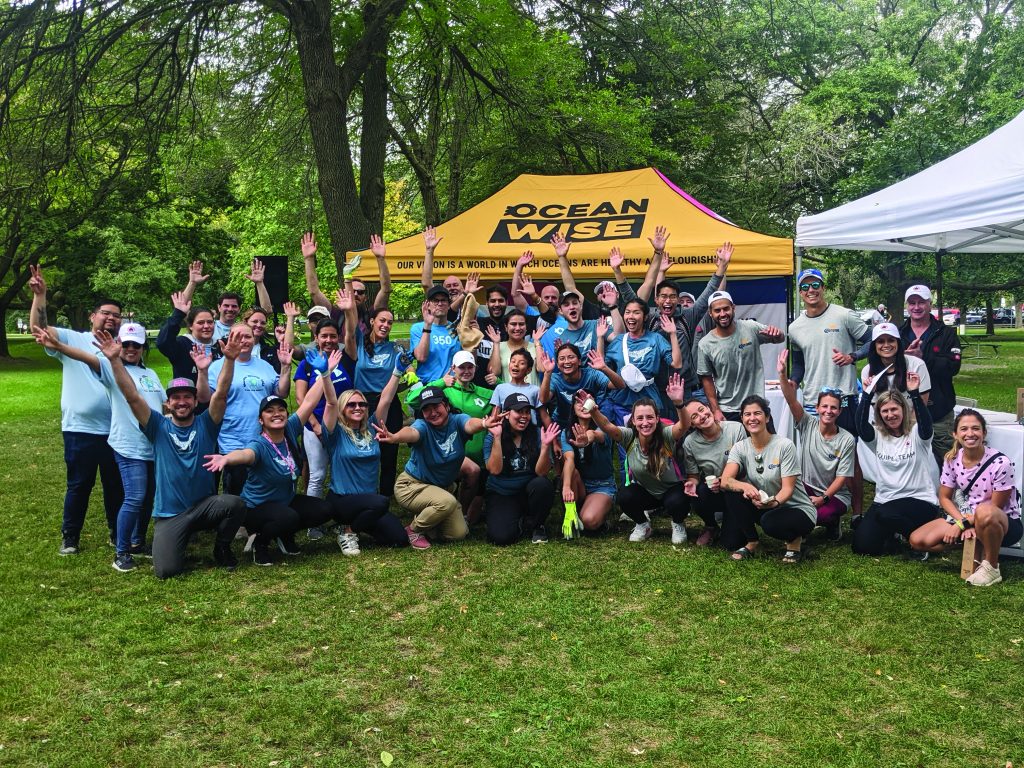
When you’re a climate action-focused retailer that sells more than 10,000 SKUs, the question of plastics can be downright daunting. How do you even start to address the issue of plastic in packaging when it’s used on virtually every product that goes on your shelves?
At Loblaw, the solution to plastic started with a decision in 2019 to make plastic packaging for all Loblaw-owned brands completely reusable or recyclable by 2025. Shortly after, in December 2020, the Coalition of Action on Plastic Waste launched with the first two of the golden design rules.
“With the golden design rules, we had a new global standard for packaging,” says Mary McIsaac, who oversees Loblaw’s control brand portfolio. “So now, every single product we develop from every single brand that we own – not just PC and No Name but also brands like Farmers Market and Life –will use plastic that is either reusable or recyclable. That’s exciting.”
Loblaw also rolled out a number of other initiatives. Last year at 14 stores in Quebec, it tested a program that allowed customers to buy cleaning products in reusable packaging. This pilot resulted in more than 5,000 refills. At its Joe Fresh stores, Loblaw eliminated 8.2 million plastic hangers in 2021.
“Everyone at Loblaw is rallying around our plastic reduction goals – this is embedded in our leadership and it’s being championed right across the organization,” says McIsaac. “At the corporate level we have a plastic waste steering committee with over 100 initiatives already in flight.
“At the retail level, we have poorly recycled black plastic being phased out across our stores – our mushroom trays and our shrimp rings have been out of black plastic for over a year now – and our styrofoam trays with clear PET wrap will soon be replaced.”
There are many trials underway, including replacements for plastic tags on bread. At the same time, single-use plastic bags at checkout are being phased out.
“No item is out of scope,” says McIsaac.
The introduction last April of paper-based packaging for all President’s Choice and No Name whole bean and ground coffee was a big win for Loblaw, and for the environment. The new “AromaPak” with Boardio technology – produced by Club Coffee, Loblaw’s coffee vendor for four decades – contains a minimum of 80 per cent renewable, recyclable and Forest Stewardship Council-certified paper.
“We were first to market with this format,” says McIsaac. “In addition to being recyclable, the paper packages are collapsible, so they also have a smaller carbon footprint compared to shipping tin cans.”
Reducing food waste
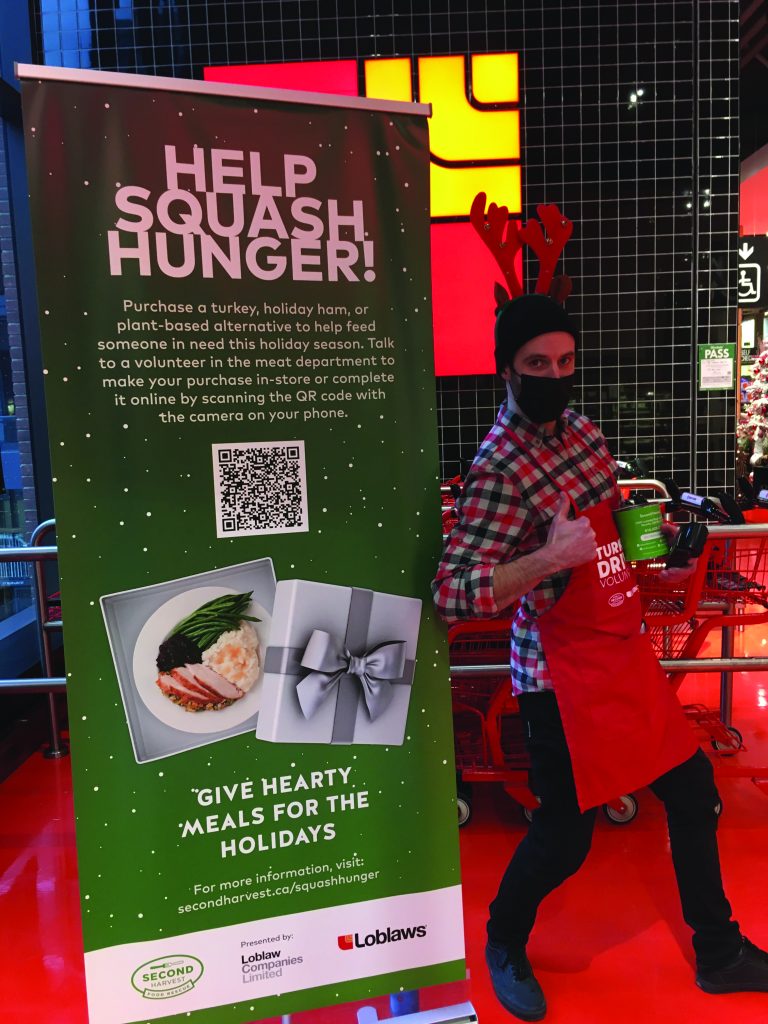
According to the United Nations, total carbon emissions from all the food wasted in the world would fall just below the CO2 produced by the planet’s most prolific emitters, China and the United States.
Recognizing how much the food retail industry contributes to this problem, Loblaw made a commitment four years ago to reduce food waste to landfill from its corporate operations by 50 per cent by 2025.
It met this target in 2020 through a strategy that included redistribution of surplus food through partners such as Second Harvest and Food Banks Canada, diversion of food to farms for animal feed, biochemical processing and anaerobic digestion to produce biogas for renewable electricity, and composting.
Loblaw also partnered with Flashfood, an app that gives consumers access to discounted foods nearing their expiry date.
“We have committed to an enterprise-wide goal of zero food to landfill by 2030, with a shorter-term target of enterprise-wide food waste reductions by year-end 2024,” says Jonathan Carroll, senior vice president, Real Canadian Superstore Operations and the program lead for Loblaw’s food waste efforts.
The numbers illustrate the magnitude of the effort – and the results. Since 2019 through its partnership with Flashfood, Loblaw prevented more than 40 million pounds of food from going to waste and saved customers $110 million on their food bills. Last year, about 12.2 million pounds of food waste got diverted for use as animal feed while 688,000 pounds was converted to biogas.
Building a better culture
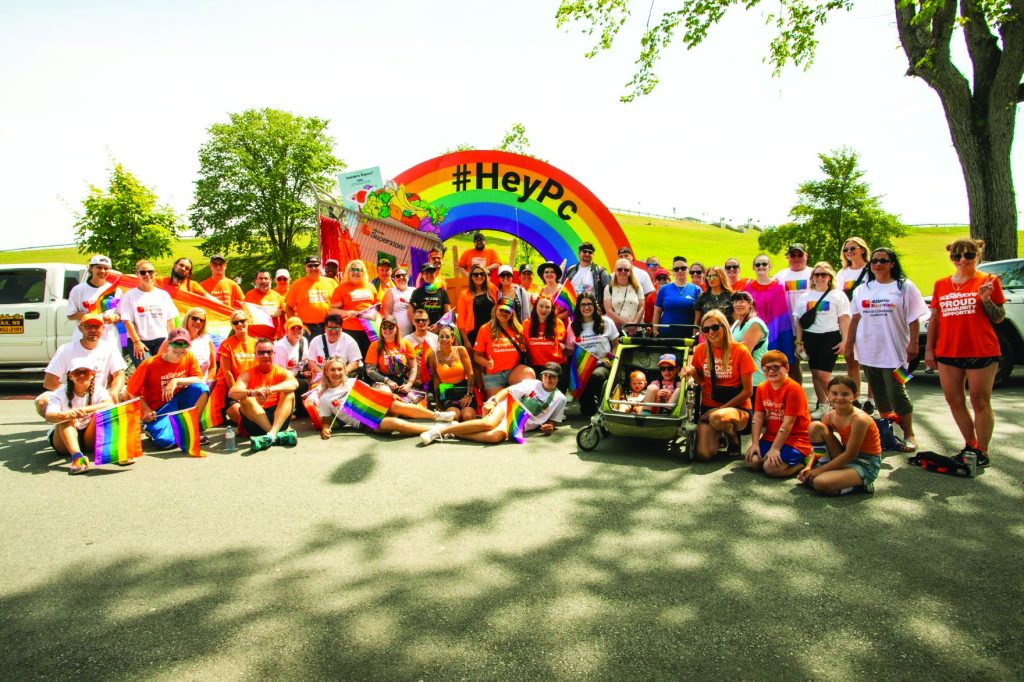
At that leaders’ meeting two years ago, one of the uncomfortable truths that emerged as an imperative for change was that even with a well-entrenched culture of inclusivity, there were people across the organization who felt out of place among their co-workers.
Zebrina Kassam, senior vice president, national operations at Shoppers Drug Mart and co-chair of the company’s Diversity and Inclusion Council, says one of the ways Loblaw has continued to address social inequities in the workplace is through an inclusion training program – which she describes as the largest in Canada – and by boosting efforts to track and measure progress in recruitment, development, engagement and belonging.
Advancing social equity involves far more than just representation in the workplace – a fact that Loblaw’s charitable endeavors have worked to address for decades.
Lisa Battistelli, executive director of President’s Choice Children’s Charity (PCCC), says food insecurity is on the rise in the country. Among Canadian children, one in five are at risk of being underfed or unfed.
To address this issue, in 2018 Loblaw committed to contributing $150 million towards PCCC’s efforts and has so far raised $66 million through its network of stores, vendors, colleagues and customers. This enabled the charity to provide 122 million meals and snacks to about 800,000 kids last year through meal programs at 2,400 schools across Canada. The charity has become Canada’s largest non-government provider of in-school hunger and nutrition programs.
Loblaw also tackles food insecurity among adults. Emma Race, senior director of sustainability and social impact at Loblaw, says the company’s partnerships with Food Bank Canada and Second Harvest – which have received more than $42 million in cash and in-kind donations from Loblaw – helped these organizations deliver more than 150 million meals to Canadians who lack reliable access to food.
Paulette Minard, director, community investment at Shoppers Drug Mart, highlights the increasing challenges around women’s mental and physical health, made worse during the pandemic. Basic access to care is another focus. A prime example: period poverty. Nearly one-quarter of Canadian women have had trouble at some point in their lives getting napkins or tampons for their period, says Minard.
As part of a broader initiative to support women’s health that includes programs to address violence against women, Loblaw has formed partnerships in Ontario and Manitoba to provide 28 million period products through schools and women’s resource centres.
Leading “with purpose”
Given its size, the strength of its commitment and the comprehensiveness of its ESG strategy, it’s not surprising to see how much Loblaw has achieved since it published its first impact report in 2008. But there’s still so much to do, says Weston.
“We’re holding ourselves accountable. Our colleagues have ESG-related objectives, our incentive plans reward our progress, and we’re constantly talking about what we’re doing and what else we can do,” he says. “But our greatest challenge is the gap between today and tomorrow. The solutions that we need to achieve all of our goals simply don’t exist yet. But we have confidence that they will.”
Leading with purpose is part of Loblaw’s DNA, adds Weston, and how it will win as an organization.
“As my father used to say, ‘if you do the right thing, you might not win every time, but you will win over time.’”
